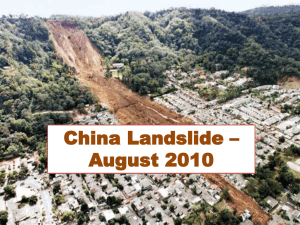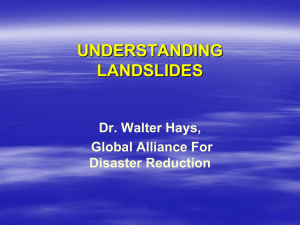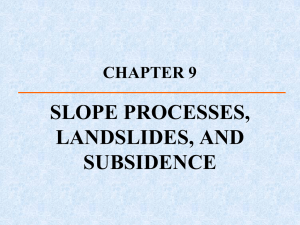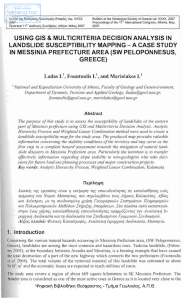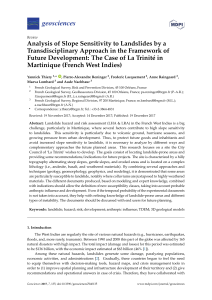What is a Mudslide
advertisement
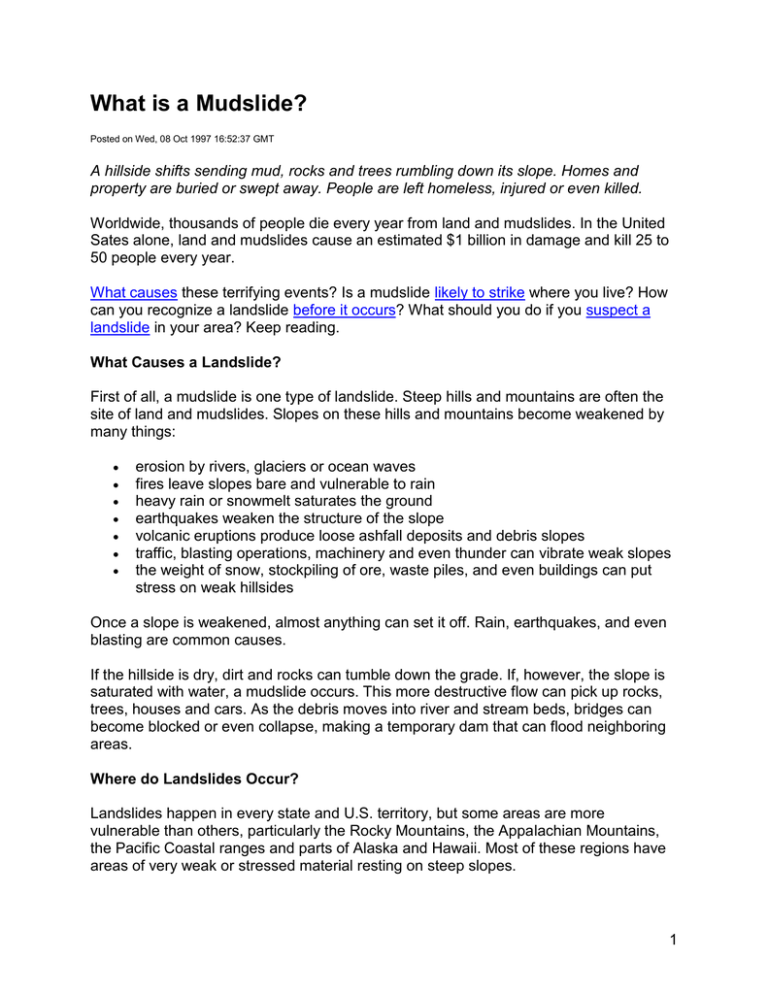
What is a Mudslide? Posted on Wed, 08 Oct 1997 16:52:37 GMT A hillside shifts sending mud, rocks and trees rumbling down its slope. Homes and property are buried or swept away. People are left homeless, injured or even killed. Worldwide, thousands of people die every year from land and mudslides. In the United Sates alone, land and mudslides cause an estimated $1 billion in damage and kill 25 to 50 people every year. What causes these terrifying events? Is a mudslide likely to strike where you live? How can you recognize a landslide before it occurs? What should you do if you suspect a landslide in your area? Keep reading. What Causes a Landslide? First of all, a mudslide is one type of landslide. Steep hills and mountains are often the site of land and mudslides. Slopes on these hills and mountains become weakened by many things: erosion by rivers, glaciers or ocean waves fires leave slopes bare and vulnerable to rain heavy rain or snowmelt saturates the ground earthquakes weaken the structure of the slope volcanic eruptions produce loose ashfall deposits and debris slopes traffic, blasting operations, machinery and even thunder can vibrate weak slopes the weight of snow, stockpiling of ore, waste piles, and even buildings can put stress on weak hillsides Once a slope is weakened, almost anything can set it off. Rain, earthquakes, and even blasting are common causes. If the hillside is dry, dirt and rocks can tumble down the grade. If, however, the slope is saturated with water, a mudslide occurs. This more destructive flow can pick up rocks, trees, houses and cars. As the debris moves into river and stream beds, bridges can become blocked or even collapse, making a temporary dam that can flood neighboring areas. Where do Landslides Occur? Landslides happen in every state and U.S. territory, but some areas are more vulnerable than others, particularly the Rocky Mountains, the Appalachian Mountains, the Pacific Coastal ranges and parts of Alaska and Hawaii. Most of these regions have areas of very weak or stressed material resting on steep slopes. 1 Even gentle hills can slide if the conditions are right. If you are: in an area that has a history of landslides at the base or top of a steep cut slope at the base of a low-lying area be aware of the signs below to alert you to the possibility of a landslide. How Can You Tell if a Landslide Might Happen? There are several things to look out for, especially after heavy rains: new cracks or unusual bulges in the ground, street or sidewalk decks and patios moving or tilting away from the house tilting or cracking of concrete floors and foundations broken water lines or other underground utilities leaning telephone or power lines, trees, walls or fences sunken roads sticking doors or windows, and visible open spaces in walls next to door jambs or windowsills sudden springs or saturated ground in areas that have not been wet before suddenly lower levels of water in creeks, when rain is still falling or has just stopped suddenly higher levels of water in creeks What Should You Do if You Suspect a Landslide? Call your local police, fire or public works department right away and let your neighbors know. Source: United States Geological Survey (USGS), National Landslide Information Center 2
